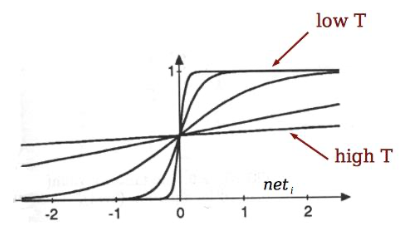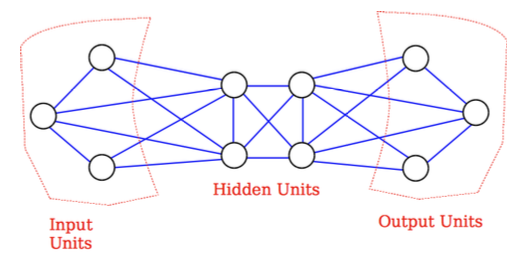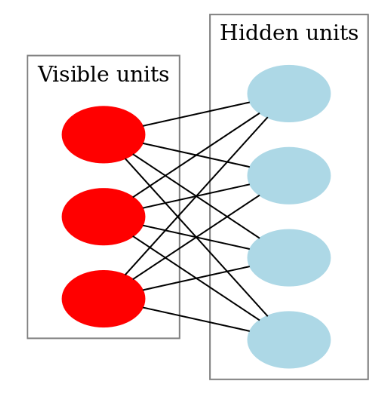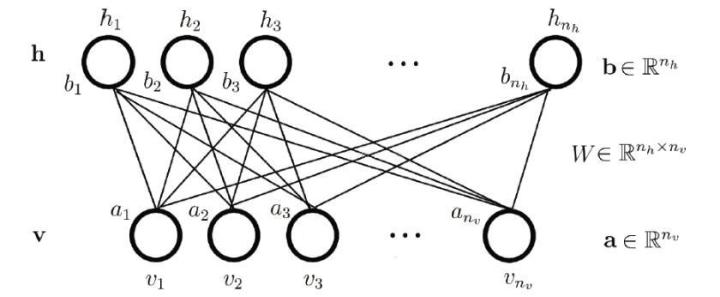Bolzmann Machine
Boltzmann Machine
- Stochastic recurrent neural network
- Introduced by Hinton and Sejnowski
- Learn internal representations
- Problem: unconstrained connectivity
Representation
Model can be represented by Graph:
Undirected graph
Nodes: States

States
Types:
- Visible states
- Represent observed data
- Can be input/output data
- Hidden states
- Latent variable we want to learn
- Bias states
- Always one to encode the bias
Binary states
- unit value
Stochastic
Decision of whether state is active or not is stochastically
Depend on the input
- : Bias
- : State
- : Weight between state and state
Connections
Graph can be fully connected (no restrictions)
Unidircted:
No self connections:
Energy
Energy of the network
$$ \begin{aligned} E &= -S^TWS - b^TS \\\\ &= -\sum\_{iUpdating the nodes
decrease the Energy of the network in average
reach Local Minimum (Equilibrium)
Stochastic process will avoid local minima
Simulated Annealing

Use Temperature to allow for more changes in the beginning
Start with high temperature
“anneal” by slowing lowering T
Can escape from local minima 👏
Search Problem

Input is set and fixed (clamped)
Annealing is done
Answer is presented at the output
Hidden units add extra representational power
Learning problem
Situations
- Present data vectors to the network
Problem
- Learn weights that generate these data with high probability
Approach
- Perform small updates on the weights
- Each time perform search problem
Pros & Cons
✅ Pros
- Boltzmann machine with enough hidden units can compute any function
⛔️ Cons
- Training is very slow and computational expensive 😢
Restricted Boltzmann Machine

Boltzmann machine with restriction
Graph must be bipartite
Set of visible units
Set of hidden units
✅ Advantage
- No connection between hidden units
- Efficient training
Energy

Energy:
Probability of hidden unit:
Probability of input vector:
Free Energy: